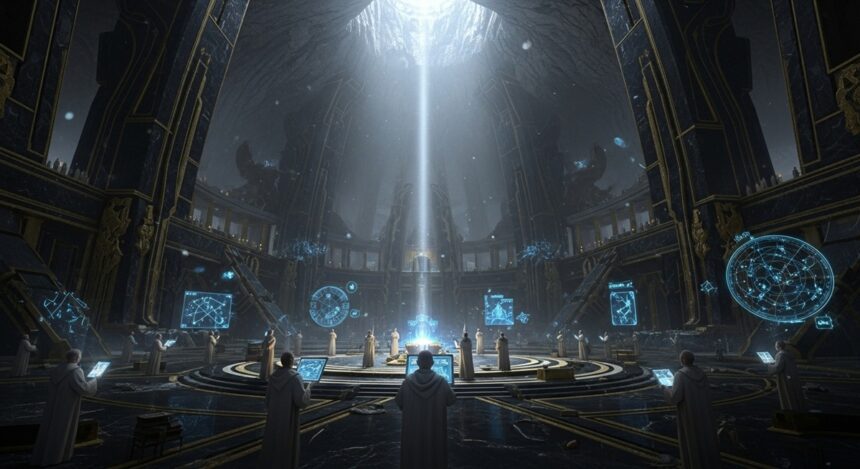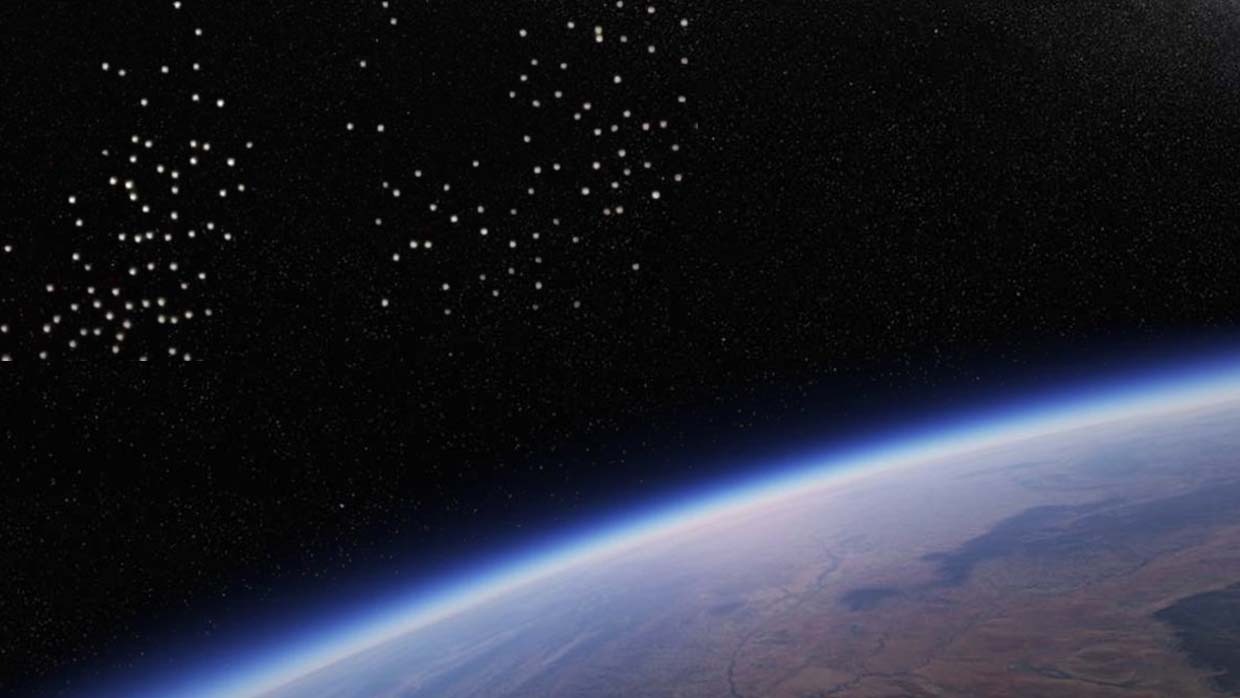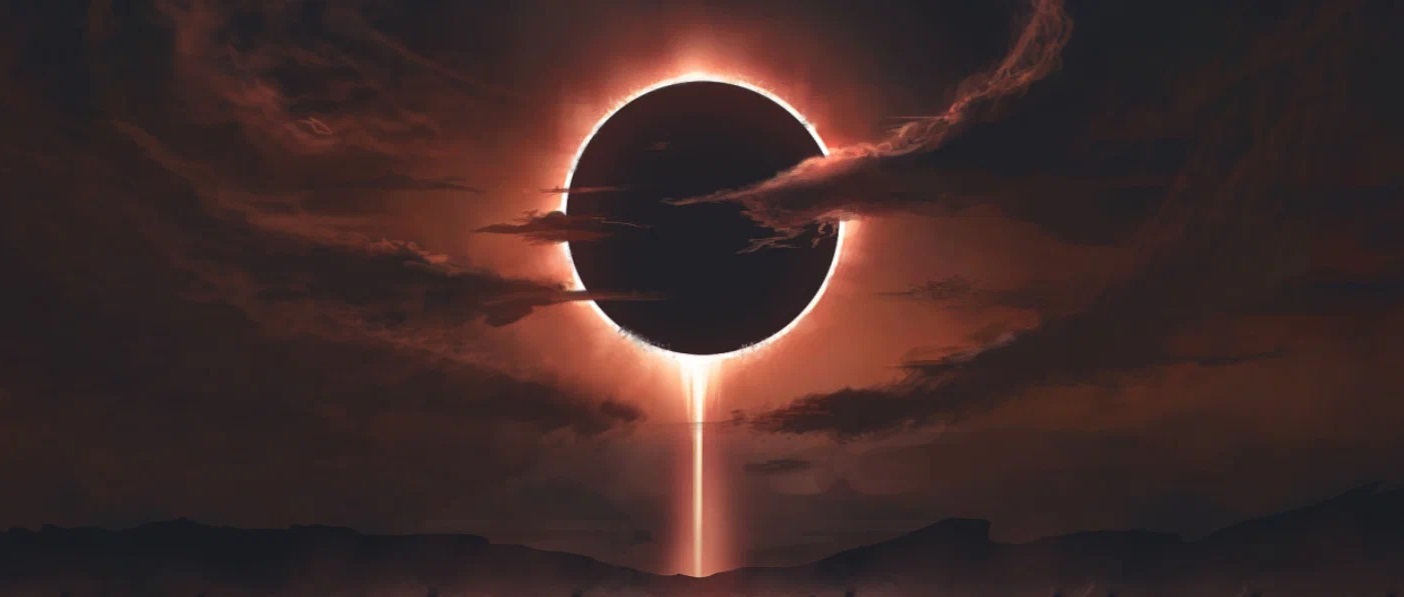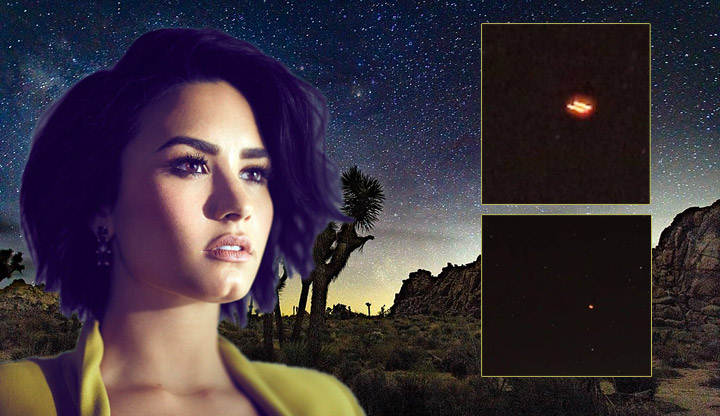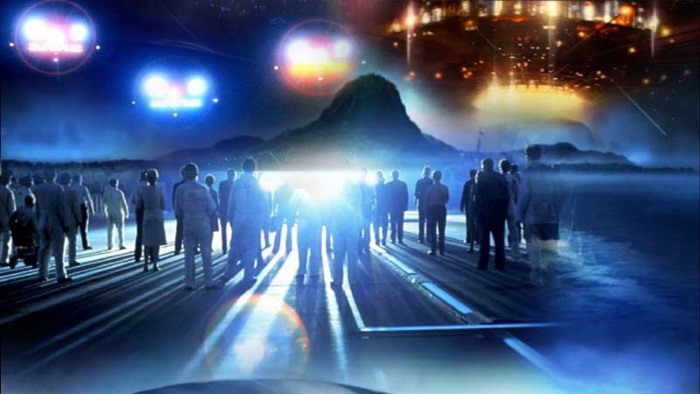Have you ever wondered if the Vatican, that ancient bastion of faith and mystery, holds keys to secrets beyond our world? For centuries, the Catholic Church has stood as a pillar of spiritual guidance, but in recent decades, whispers of extraterrestrial connections have grown louder.
From papal statements embracing alien life to conspiracy theories about hidden underground realms, the idea of a “city of extraterrestrial intelligence” under the Vatican captures the imagination like few other tales. It’s a blend of theology, history, and speculation that challenges our understanding of the universe—and our place in it.
The Catholic Church’s Evolving Stance on Extraterrestrial Life
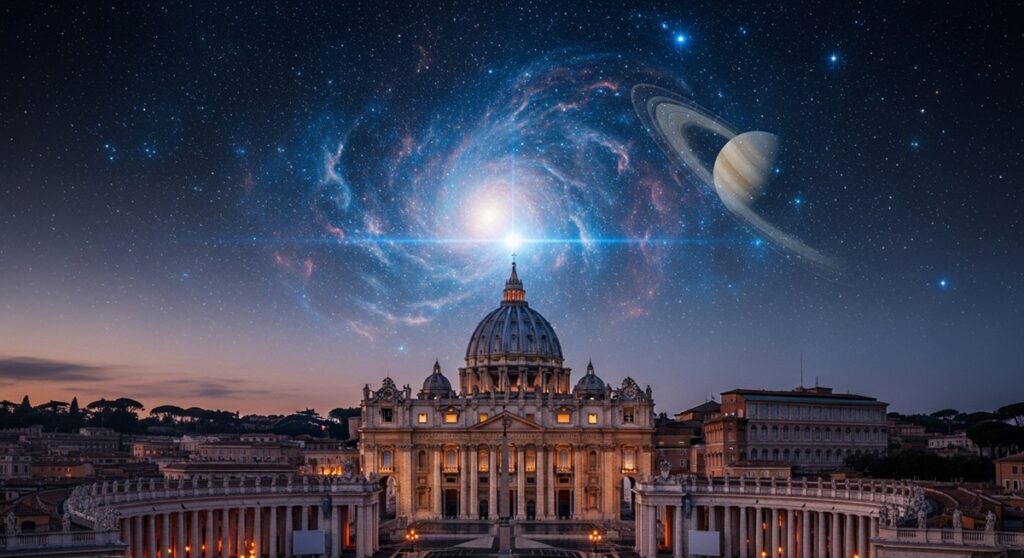
The notion that we’re alone in the cosmos has long been questioned by scientists and philosophers alike. But what about the Church? Surprisingly, the Vatican hasn’t shied away from the topic. In fact, over the past few popes, there’s been a noticeable openness to the possibility of life beyond Earth. This is rooted in theological reasoning that sees the universe as a vast creation of God, potentially teeming with other beings.
Pope John Paul II: Embracing the Universal Family
Let’s start with Saint John Paul II, whose pontificate from 1978 to 2005 bridged the Church into the modern era. In a public audience, when asked by a child about aliens, he didn’t dismiss the question. Instead, he affirmed that all creatures in the universe are under God’s wing. “No, not only those who live on Earth, but in the universe as a whole,” he reportedly added. This was aligned with his broader views on creation. John Paul II saw no conflict between faith and science, even encouraging the study of evolution and cosmology. For him, extraterrestrials would simply be part of God’s grand design, brothers and sisters in the cosmic family.
This perspective draws from Catholic theology, which posits that God’s love extends infinitely. If intelligent life exists elsewhere, it too would be created by the Divine. John Paul II’s words opened the door for future discussions, setting a tone of curiosity rather than fear.
Pope Benedict XVI: Baptism for Beings from Beyond
Building on his predecessor’s foundation, Pope Benedict XVI took things a step further. While he didn’t directly address aliens in his encyclicals, his chief astronomer, Jesuit Father José Gabriel Funes, did so on his behalf. In 2008, Funes stated in an interview that believing in extraterrestrials doesn’t contradict Christian faith. “The alien is my brother,” he said, emphasizing that such beings could be part of God’s creation.
Benedict’s era also saw Vatican conferences on astrobiology, where experts pondered the implications of discovering life elsewhere. One memorable quip came from a Vatican astronomer who said he’d baptize an alien “if they asked.” This reflects a practical theology: If extraterrestrials seek salvation, the Church would welcome them. Benedict, a theologian at heart, likely viewed this as an extension of universal redemption—Christ’s sacrifice for all creation, not just Earthlings.
Pope Francis: Open Doors to the Stars
Fast forward to Pope Francis, whose down-to-earth style has made him a global icon. In 2014, during a homily, he famously quipped, “If tomorrow an expedition of Martians came, and some of them said to us: ‘We want to be baptized!’ Who are we to close doors?” This lighthearted remark went viral, sparking debates worldwide. Francis has reiterated that the universe is vast and full of wonders, and God’s mercy knows no bounds.
In interviews, he’s touched on how extraterrestrials might fit into salvation history. He suggests Jesus was sent to Earth specifically, but other worlds could have their own paths to God. This progressive view has endeared him to ufologists, who see the Vatican as a potential ally in disclosure efforts. Why do they turn to the Pope? Perhaps because the Church’s ancient archives and global influence make it a custodian of hidden truths.
Conspiracy Theories: Hidden Contacts and Underground Worlds
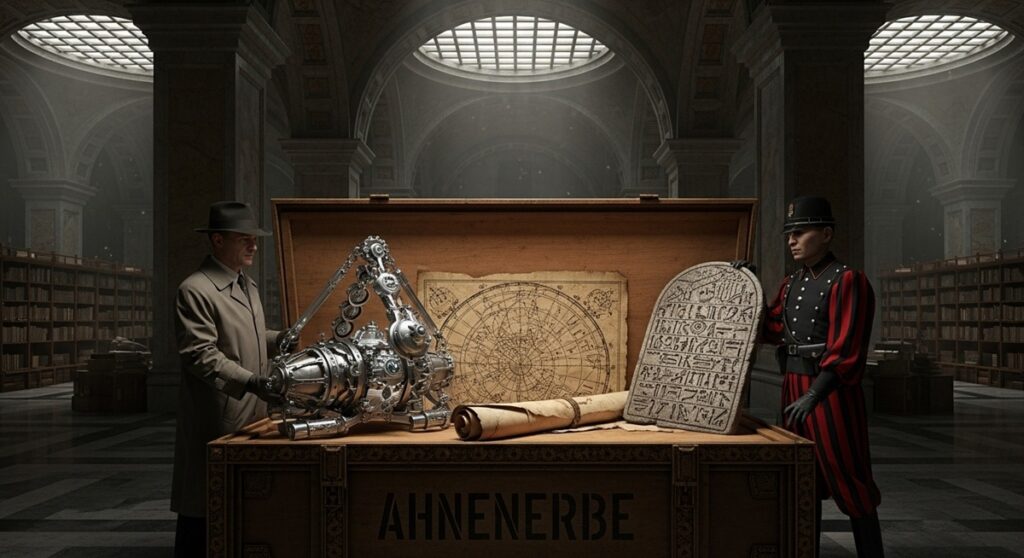
Beyond official statements, a web of conspiracies swirls around the Vatican. They draw from historical events, leaked documents, and eyewitness accounts. At the heart is the idea that contact with extraterrestrials has already happened, and the evidence is buried deep beneath St. Peter’s Basilica.
The Ahnenerbe Connection: Nazi Artifacts and Paleocontact
One theory traces back to World War II and the Nazi occult society Ahnenerbe. This group, obsessed with ancient myths and “Aryan” origins, allegedly uncovered artifacts suggesting ancient alien visits—paleocontact, as it’s called. According to some accounts, these items were smuggled to the Vatican for safekeeping after the war. A 1950s German report supposedly confirmed this, though it was ignored at the time.
Conspiracy researchers like those from MUFON (Mutual UFO Network) point to this as proof the Vatican holds physical evidence of ETs. While mainstream historians dismiss it as Nazi pseudoscience, the idea persists: What if these artifacts—strange metals, ancient star maps—prove we’re not alone? The Vatican’s secret archives, spanning miles of shelves, could hide such treasures, fueling speculation about forbidden knowledge.
The Black Pope and Extraterrestrial Residences
Then there’s the enigmatic “Black Pope”—not the Jesuit superior general, but an alleged alien entity residing in Vatican basements. In exopolitical circles, this figure is said to influence global affairs, from religion to geopolitics. Theories claim multiple such residences worldwide, including Antarctica and Australia, where decisions shaping humanity are made.
This ties into claims by figures like Daniel Sheehan, a lawyer linked to UFO whistleblowers, who asserts the Vatican knows of half a dozen non-human species from different star systems. While unverified, these stories paint the Vatican as a hub for interstellar diplomacy. Is it possible? Skeptics say no, but repeated UFO sightings over the tiny city-state raise eyebrows.
Andrea Spinozza’s Shocking Revelation
Adding fuel to the fire is the story of Catholic priest Andrea Spinozza (or a similar name in some accounts; details vary). In 2016, before vanishing to Africa, he allegedly recorded a message claiming an entire underground city exists beneath the Vatican. Designed for thousands, it’s accessible only to the most devoted after years of service. There, initiates undergo rites involving alien beings who’ve dwelled on Earth for millennia—first in Rome, then Turin, now the Vatican.
Spinozza described these entities as overlords of religious, political, and economic spheres, with bases globally. His “revelation” exploded online, embraced by conspiracy theorists. Though no concrete evidence supports it, it echoes broader narratives of hidden elites and extraterrestrial governance. Spinozza’s disappearance? Some say silenced; others, a hoax. Either way, it underscores the allure of Vatican mysteries.
UFO Sightings Over the Vatican: Patterns in the Skies
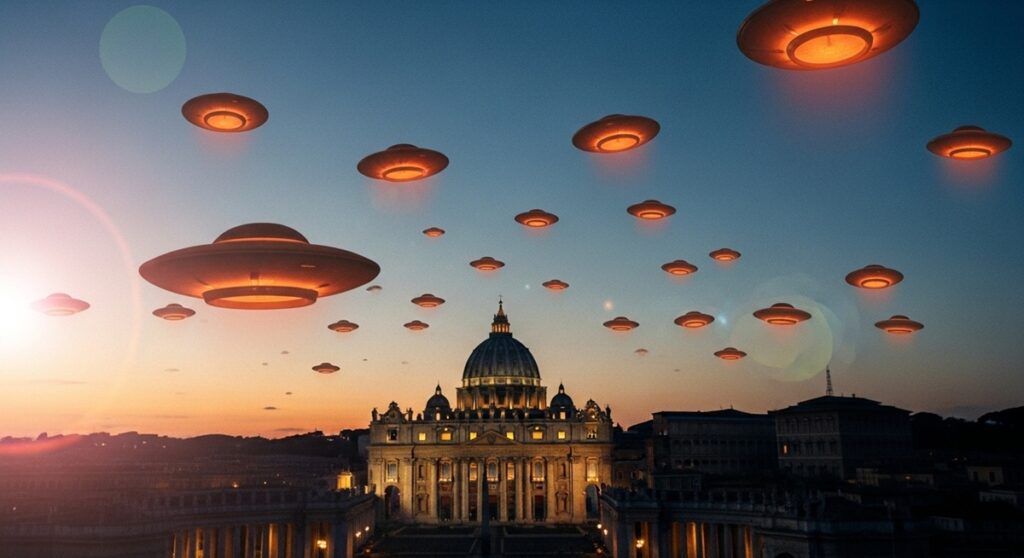
In 2007 an alleged photograph of what appears to be a UFO/UAP over Vatican City surfaced. Some said that this photograph shows nothing more than a small plane reflecting the sun where
If there’s smoke, is there fire? MUFON data over the past decade shows unusual activity over the Vatican—comparable to sightings in vast countries like the US or Russia. Witnesses describe orange disks or silvery orbs, appearing repeatedly. Why such a small area?
Ufologist Steven Greer suggests these aren’t random: “If the same object appears multiple times in one place, it’s likely purposeful.” He links it to “special zones” like Australia and Antarctica. Videos and photos, like a 2007 orange disk over St. Peter’s, circulate online, debated as drones or genuine anomalies.
The Vatican hasn’t commented officially, but its Specola Observatory employs astronomers who acknowledge ET probability. Brother Guy Consolmagno, a director, has said any sane scientist expects discoveries of life-bearing planets. By the 22nd century, he predicts, our views will transform.
Expert Insights: Bridging Faith and the Cosmos
Steven Greer’s Perspective
Greer, founder of the Disclosure Project, has long pushed for UFO transparency. He claims governments—and perhaps the Vatican—know more than they admit. In interviews, he’s hinted at Church involvement in ET matters, urging openness. While not directly tied to Vatican leaks, his work amplifies theories of purposeful visits.
The Vatican Observatory’s View
At the Vatican’s Arizona-based telescope (VATT), scientists like Consolmagno explore the stars without fear of contradicting faith. “Would you baptize an extraterrestrial?” is a book title by him and a colleague, answering yes—if they sought it. They argue aliens might be free of original sin, closer to God.
Father Funes, a former director, called belief in ETs compatible with Christianity. Conferences since 2002 have prepared the Church for disclosure, discussing theological implications. No demons here—just potential “extraterrestrial brothers.”
Smoke Without Fire, or Hidden Truths?
The Vatican stands at the crossroads of faith and frontier science. Popes’ openness suggests a Church ready for cosmic revelations, while conspiracies paint a shadowy picture of underground alliances. UFO patterns and expert views add intrigue, but hard proof remains elusive. Perhaps it’s all speculation, born from humanity’s eternal quest for meaning. Or maybe, just maybe, there’s a city of stars beneath the eternal city. As discoveries unfold, one thing’s clear: The universe is bigger than we know, and the Vatican might hold a piece of the puzzle.







